Mirna Bamieh
How many students in the world are used to guns pointed at them on their way to college? How many students in the world protested against a foreign occupation by taking lectures on checkpoints under the burning summer sun, as a way to say, ‘you can capture our bodies but not our minds and souls’?
I am 22 years old and graduated from Birzeit University in 2005, with a major in Psychology and minor in Sociology. I have been involved in several contemporary art exhibitions over the last five years and had a solo exhibition of my work in 2004. I never took social documentary photographs before, so this project opened up a whole new world for me. It changed my perspective: people, markets, streets, stones and even garbage will no longer just randomly figure in my life, everything now has a new dimension.
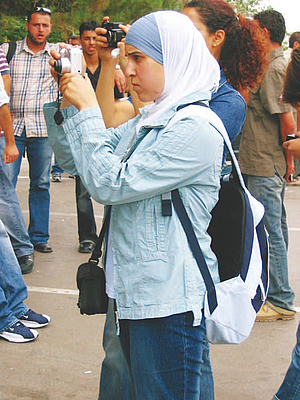
In the world of photographs, when the camera becomes your eyes and your beating heart, the photo that you take will not be a single moment in your memories, but will be the complete reality and the complete story. When you give the photo your faith, the photo rewards you with a truthful face of the story.
That was my experience in the Project. For me and the whole group, it was an experience of living our reality and taking photos of that reality.
It was not just about art photography, it was a moment in history; it was a moment in our time as Palestinian students that tells the world our truth. In this moment we try to translate part of our dreams and our hopes as students fighting the occupation. That’s why, in most of the photographs, the smiles have gone. All of this comes as a step in the path of searching for justice, to solve the darkness that affects the lives of Palestinian children.
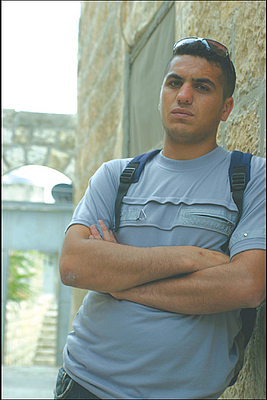
Education is the main foundation for building freedom and independence and as such is one of our strongest available tools to stand against the occupation. So, as students at Palestinian universities, we a have major role to play in the society. But we also face a lot of pressures and obstacles under the Israeli occupation, such as the checkpoints, closures and isolation. All of that has a big impact on a student’s personality and effects their educational achievements. The Israeli occupation doesn’t want a well educated, intelligent Palestinian population to exist. It wants an underdeveloped Palestinian society to ensure the continued domination of the occupation.
When I started working with photography, I found that a photograph can represent what is inside the photographer. It can also tell the story of what we face as students in Palestine. Through the photographs we take, we hold up a picture to the world that shows the challenges that students make against the occupation in order to continue their education.
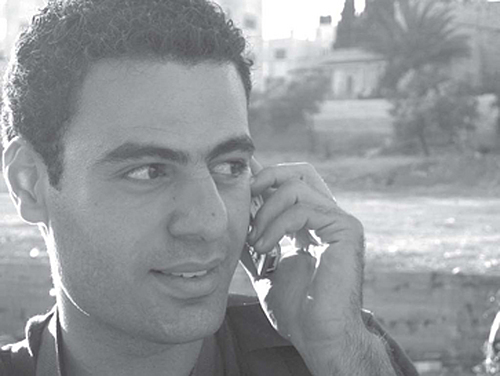
I am 26 years old and graduated from Al-Najah National University. I have experienced different kinds of media, starting out as a radio talk show host for a community radio station in Nablus, and later working as a contributor writer and filmmaker. I now dedicate myself to photojournalism and am passionate about the visual arts. Trying to capture the truth to make a difference in the world, my camera is always with me.
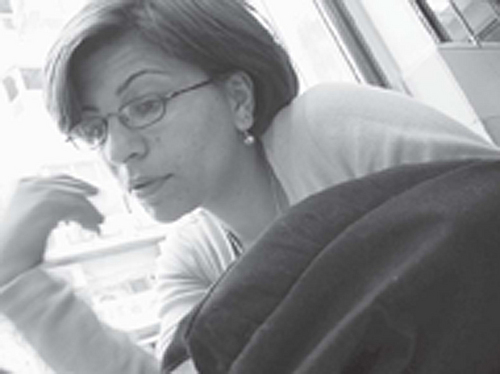
I am 21 years old, and a student of Journalism and Political Science at Birzeit University. I’m from Hebron so have to live away from my family to come to study at Birzeit University because of all the checkpoints on the roads. I can’t see my family very often because it is so difficult to go home. When I was younger, I went to school in the Old City of Hebron, so it was important for me to go back there to photograph the experiences of children going to school. The situation that they face is much worse now than it was for me a few years ago. The Old City of Hebron is occupied by Israeli settlers who deliberately harass and attack children going to school as one way of trying to drive the majority Palestinian population out. Israeli army checkpoints in the middle of the city stop and search the children going to school, making them empty their school bags every single day. The same school children I was photographing finally hit the international news headlines in November 2005, when they protested against the soldiers and refused to submit to their harassment and intimidation. The strength that they showed was amazing.
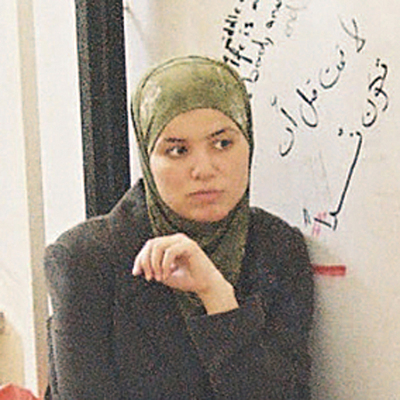
“In the future, I want to be a psychiatrist to help people deal with their problems and disappointments. As people with special needs, our weapons will be our determination and hope.” That’s what Halima told me, a young girl from Nablus, when I met her in a park. At that moment I decided to focus on the issues that disabled students face in fighting for their right to education. In Palestinian society, disabled people are marginalized and their needs are far away from our realities. When I tried to reach Halima, I found all kinds of obstacles in my way, obstacles that not only came from the occupation but also from discrimination within the society itself.
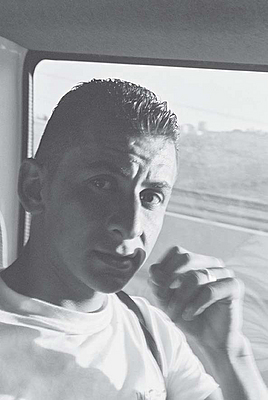
I studied Journalism at Al-Najah National University, and also trained in Television Montage with Al-Jazeera news network. I graduated from Al-Najah in 2005 and am now working at the University as a photography and montage practitioner. I have participated in several photography exhibitions and film festivals, most recently the Al-Najah University Second Film Festival, with a film called ‘Divorce’.
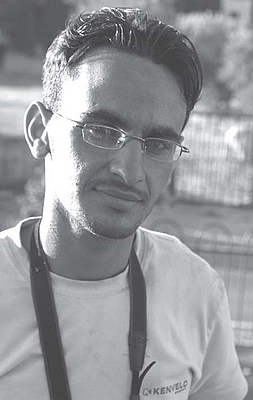
I am 23 years old and graduated from Birzeit University in the summer of 2005 I am now working as a reporter for Al Quds Newspaper. By participating in the Right to Education Photography Project, I was able to reflect on my experience as a Palestinian student. I always feel concerned about the effect that the occupation is having on children’s psyches, so the main focus of my photographs is what children can tell us about themselves and their ideas.
In my project, I asked the children to draw the things that can prevent them from going to school. And the surprise was that most of these children’s drawings neglected the economic and social circumstances of their families - which I thought would take a bigger part – the drawings were only about the military barriers of the occupation that they see on their way to school.